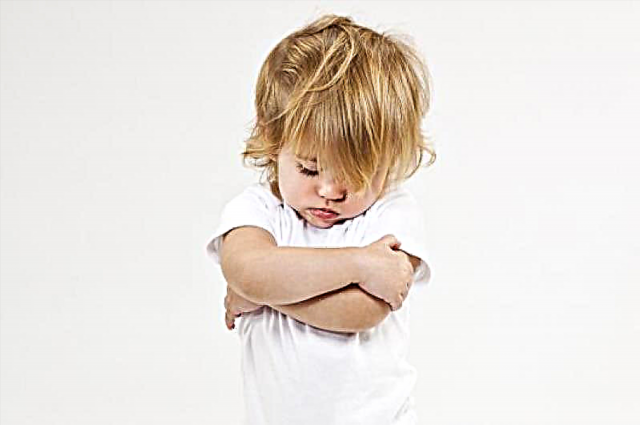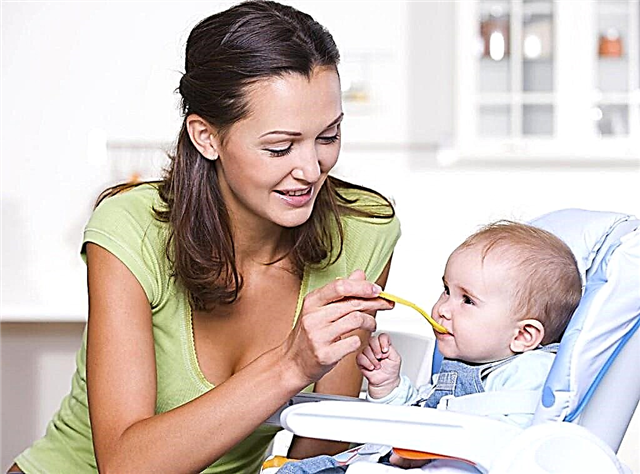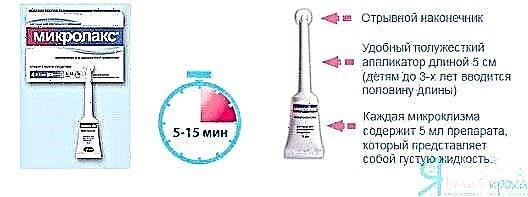
Any changes on the baby's skin immediately attract the attention of the parents. And if everything is more or less clear with pimples and rashes, then the appearance of red spots raises many questions and concerns. We will talk about what erythema is and why it appears in this article.
What it is?
The word "erythema" has Greek roots. Translated from Greek means "red". This fully reflects the essence of the ongoing phenomenon. Strong redness appears on the child's skin, which is associated with pathological expansion of the capillaries.
Erythema is not an independent disease, but a symptom indicating the development of inflammation or more harmless reasons.
Erythema can appear on the skin of a child after a burn, after exposure to acid or alkali, as well as due to processes occurring inside the body, for example, during an allergic reaction.

Redness of the skin is not always a sign of illness.
So, physiological erythema can be caused by exposure to sunlight, if the child sunbathed and played in the sun, by visiting a bath or sauna, when the expansion of the capillaries is temporary. Even with intense shame or stress, a person can blush. And in medicine, such redness of the skin is also considered erythema, however, reflex.
Causes
The main cause of redness is the expansion of the capillaries. In children, erythema is not uncommon due to the structural features of the skin. Blood vessels in babies are located close to the surface, to the epidermis, so any provoking factor can cause a rapid expansion of small vessels and, as a result, redness of the skin.


Therefore, many erythemas have completely safe and natural causes, provided by nature itself. So, in children, reddening of the skin appears as a reaction to massage, to a strong pressing touch. The capillaries expand in response to the high temperature from the outside - in the bath, in the sauna. If a child goes in for sports, plays outdoor games, runs and jumps, the blood supply becomes more intense, the capillaries expand under blood pressure.
An interesting fact - erythema most often the human body of any age reacts to the suggestion of a psychotherapist during a hypnosis session.
Pathological causes of redness can be associated with:
- an infectious disease;
- thermal or chemical burn;
- any disease that occurs against a background of high temperature;
- an allergic reaction;
- diseases of the heart and blood vessels;
- post-traumatic changes in the skin.


There are also skin redness, the cause of which doctors cannot establish, such erythemas are called idiopathic.
Types and symptoms
All erythemas are divided into several types, which differ in external manifestations and the cause of capillary expansion.
Annular
This species is also called persistent erythema. With it, ring-shaped spots form on the skin. It usually affects the torso and cheeks as well as the shoulders of the child. Such annular redness can occur with rheumatism, with a viral or bacterial disease.
There is also a special form of annular erythema - Darrieus erythema, in which, for unknown reasons, pink ring spots appear on the skin, which rise above the skin and tend to grow constantly. Redness in the form of rings may peel off, or may not violate the integrity of the skin. Sometimes erythema appears suddenly and goes away after a few hours.
It can be inherited, and erythema ring accompanies diseases such as tonsillitis, chronic sinusitis and cholecystitis, disruption of the gastrointestinal tract and even some tumor processes in the body.
Such erythema is most often chronic and worsens from time to time.


Exudative multiforme (polymorphic)
This variety is characterized by the appearance of redness not only on the skin, but also on the mucous membranes of the mouth, nose, and throat. Most often, rashes appear on the arms (hands) and legs (feet), rounded redness appears on the soles, legs, on the forearms and on the extensor side of the elbows. This erythema looks like a raised, deep pink rash with well-defined edges.


At first, papules are small - only 2–3 mm in diameter, but they grow rapidly and can reach 3 centimeters in diameter. There is a small hole in the center of the formation - a sinking. Because of this, the papule looks slightly bluish.
Often, a watery rash or other type of rash appears on and around these rashes, that is why the term "multiforme" is present in the name of erythema. The appearance of such rashes is usually preceded by high fever, intoxication, and severe general malaise. Exudative erythema accompanies many viral and bacterial diseases, as well as allergic reactions.
Erythema itself, developing and increasing in area and size, significantly weakens the child's immunity. He begins to get sick more often, it takes much more time to recover.
Most often, this form of the disease occurs as a side effect when using various medications.
Toxic
This is an allergic redness of the skin. It is most common in newborns (up to 70% of babies are prone to this form of allergy). Toxic erythema manifests itself as a reaction to allergens from food, drugs, contact with allergenic substances, household chemicals, body care products, cosmetics.


This redness is slightly hot to the touch. It begins immediately or 2-3 days after contact with the allergen (delayed allergic reaction). The appearance of the skin does not change, the integrity of the skin is not compromised. Red solid spots of a fairly large size are most often located on the cheeks and chin of the child, on the tummy, thighs, buttocks.
On the soles and palms of a child, toxic erythema never occurs.
After a while, small nodules and bubbles form at the site of redness. This increases the likelihood of infection, the addition of a bacterial infection. The most susceptible to this type of skin lesions are newborn boys; in girls, toxic erythema occurs several times less often.
Infectious
It is caused by parvovirus B 19. This agent is transmitted by airborne droplets. Most often, this virus is transmitted to children.


The disease begins like the most common ARVI - the child sneezes, he starts a runny nose, the temperature rises. After 4-5 days, rashes appear on the skin. At first they look like small red spots on the cheeks. From the outside it looks like a fresh slap in the face.
Then similar redness appears on the legs, arms, forearms, knees, neck.
The round spots gradually grow and begin to resemble a lace pattern on the skin. Usually, these pink and reddish laces go away within a week. If they later make themselves felt, then only occasionally, with a sunburn, for example. They appear again for a while and pass by themselves.
Infectious erythema of Chamer
A typical childhood illness. With it there is no high temperature, and the redness of the skin of the cheeks in the shortest possible time becomes similar in outline to the wings of a butterfly. For many children, this sudden erythema can occur without any symptoms at all. And that it is transferred, a person learns much later, when antibodies to B19 are found in his blood. By the way, the immunity is developed for life.


Nodular (knotty)
This form of the disease has characteristic visual manifestations - nodules. They are formed not on the surface of the skin, but in its deeper layers. The causes are still being studied, however, most researchers tend to believe that an allergic reaction is to blame for the formation of a nodular rash. We are talking about an allergic reaction to the waste products of certain bacteria, for example, streptococcus.


Usually nodules appear in the process of scarlet fever, streptococcal sore throat, bacterial otitis media. Also, erythema nodosum can become a symptom of tuberculosis. Such a rash can accompany inflammatory processes occurring in the intestines and some cancers.
The nodes themselves are quite dense, deep, varying in size - from a few millimeters to 5 centimeters in diameter. The nodules rise somewhat above the skin, the skin above them is slightly reddened, there are no clear boundaries, since there is a slight swelling.
The nodules grow to a certain size and begin to reverse development - at first, the redness becomes brown, then yellowish. Bruises usually follow the same color sequence.
Most often, nodes occur on the legs, on the front surface of the legs. But sometimes knots are formed on the face, and on the hips, and on the bottom of the child. In children, this form of the disease can manifest itself on a nervous basis due to severe stress, fright, especially in very impressionable babies.

Treatment
All types of erythema can be treated at home. But this fact does not negate the need to show the child to a dermatologist, pediatrician.
A thorough diagnostic study is necessary to exclude cancer, serious disorders in the cardiovascular system and other diseases that require urgent treatment in the child.
The child may also have to visit an allergist, since a large part of the erythema, in one way or another, is associated with allergic reactions of one type or another.
For erythema ring, drugs are prescribed that can affect the underlying cause of red and pink rings on the skin. Most often, antihistamines and vitamin complexes are prescribed. If there is an associated infection, then antibiotics may be recommended. This rather simple form of the disease lends itself well to local aerosol treatments with sodium thiosulfate. Sometimes a dermatologist considers it necessary to use hormonal ointments with a small content of glucocorticosteroid hormones - "Advantan", "Triderm".


Treatment is necessary to prevent erythema annulus from becoming chronic. The child is shown dispensary observation by a dermatologist for 1 year.
With polymorphic exudative erythema, hormonal treatment is indicated only in the case of a chronic complex form. If a child has such an ailment for the first time, hormones will not be prescribed to him, but will be limited to antihistamines - "Tavegil", "Suprastin" and others. It is important to remove from the body as soon as possible what caused the skin phenomena, and therefore the child is immediately prescribed sorbents and diuretics, as well as calcium preparations.


Local treatment will include the use of antiseptics. Since vesicles and pustules often accompany this form of the disease, salicylic alcohol, hydrogen peroxide, and aniline dyes, for example, "Fukortsin", are recommended.
For extensive lesions, the doctor may prescribe hormonal ointments.
Toxic erythema requires antihistamine therapy and topical use of similar drugs, for example, "Fenistila". Less commonly, doctors prescribe hormonal ointments.

With infectious erythema antibiotics cannot be taken, because the causative agent of the disease is the B 19 virus. A baby with such a diagnosis can be hospitalized, since his immunity is weak. Such patients are shown intravenous administration of antiviral drugs in a hospital setting under the constant supervision of doctors. Special treatments at home are not required, the child is shown drinking plenty of fluids and bed rest at elevated temperatures.

Erythema nodosum is treated with dry heat. It is useful to do dry compresses on the legs, especially if there is an additional symptom - joint pain. This is usually enough. If the duration of the manifestation of erythema is more than 2 weeks, the doctor may prescribe calcium preparations, vitamins, hormonal ointments for local use, as well as antihistamines both locally and systemically.
Consequences and forecasts
Most of the forecasts are positive. Erythema goes away and never comes back. In a chronic form, it can recur during illness, with overheating, but it will not have any effect on the general condition of the child.
Erythema itself is not dangerous. Diseases can be dangerous, a symptom of which she has become.
If the child is not examined, you can waste time on the treatment of some serious causes - tuberculosis, oncology.

Infectious erythema after recovery leaves the child with lifelong immunity to the B 19 virus.
A person will not be able to get sick a second time. Exudative erythema polymorphism tends to become chronic, but timely treatment reduces this risk by about 40%.
Erythema nodosum, even in a chronic form, does not interfere with life and does not cause much trouble. Ring-shaped erythema also has a positive prognosis.
For more information regarding the disease, you can find out by watching the video below.



